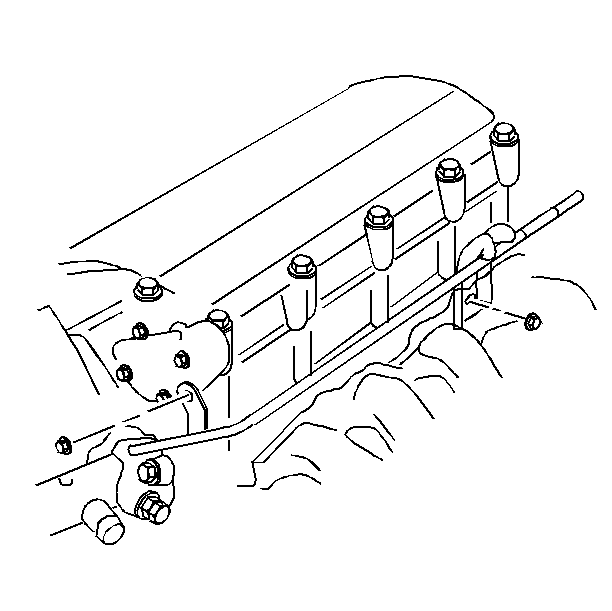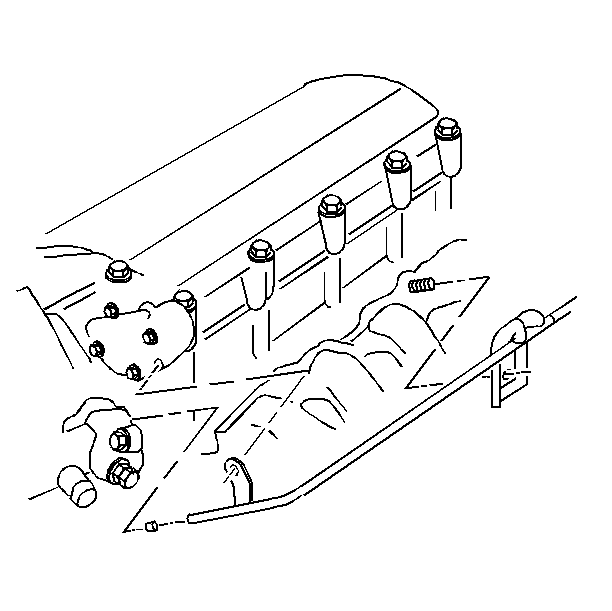Removal Procedure
- Partially drain and recover the coolant. Refer to Cooling System Draining and Filling .
- Remove the coolant air bleed pipe retaining bolt from the cylinder block and the retaining nut from the exhaust manifold stud.
- Disconnect the surge tank inlet hose and clamp from the air bleed pipe.
- Pull the pipe from the coolant outlet housing.
- Remove the air bleed pipe from the vehicle.
Notice: When adding coolant, use DEX-COOL® coolant. If silicated coolant is added to the system, premature engine, heater core or radiator corrosion may result. In addition, the engine coolant will require change sooner-at 50 000 km (30,000 mi) or 24 months.



Installation Procedure
- Install the air bleed pipe to the coolant outlet housing.
- Connect the surge tank inlet hose and clamp to the air bleed pipe.
- Install the air bleed pipe and retaining nut to the exhaust manifold stud.
- Install the pipe and the bolt to the cylinder block.
- Refill the cooling system. Refer to Cooling System Draining and Filling .
- Start the engine. After the engine reaches normal operating temperature, check for coolant leaks.



Notice: Use the correct fastener in the correct location. Replacement fasteners must be the correct part number for that application. Fasteners requiring replacement or fasteners requiring the use of thread locking compound or sealant are identified in the service procedure. Do not use paints, lubricants, or corrosion inhibitors on fasteners or fastener joint surfaces unless specified. These coatings affect fastener torque and joint clamping force and may damage the fastener. Use the correct tightening sequence and specifications when installing fasteners in order to avoid damage to parts and systems.
Tighten
Tighten the nut to 42 N·m (31 lb ft).
Tighten
Tighten the bolt to 14 N·m 124 lb in).
